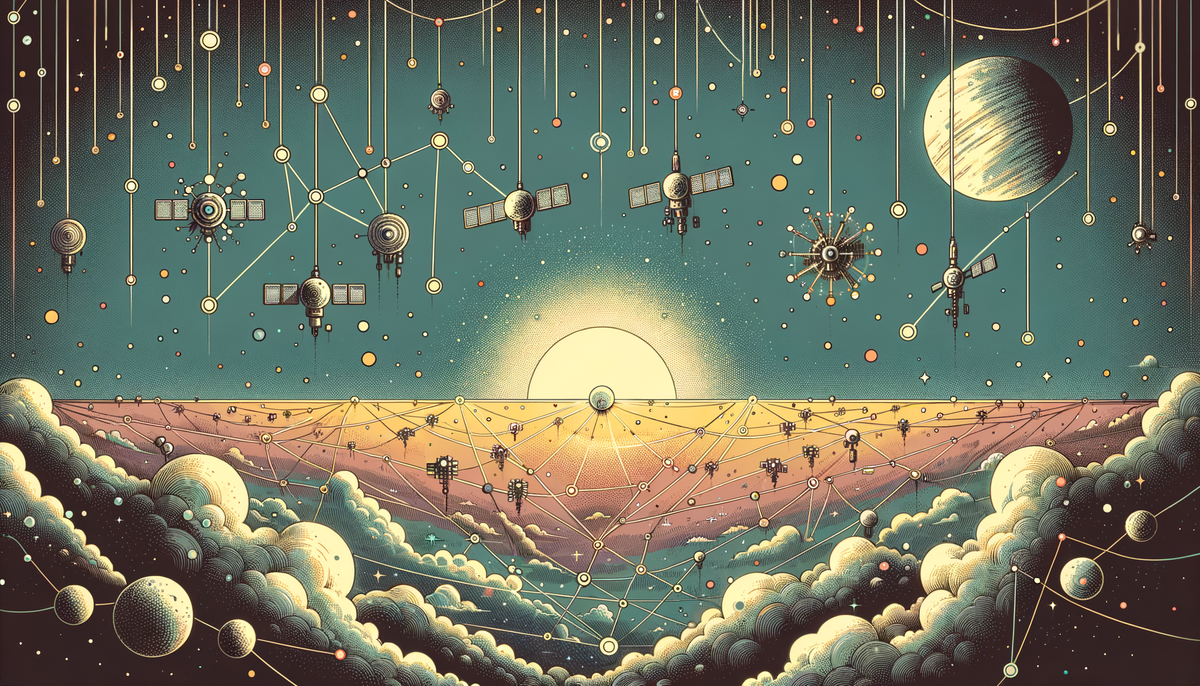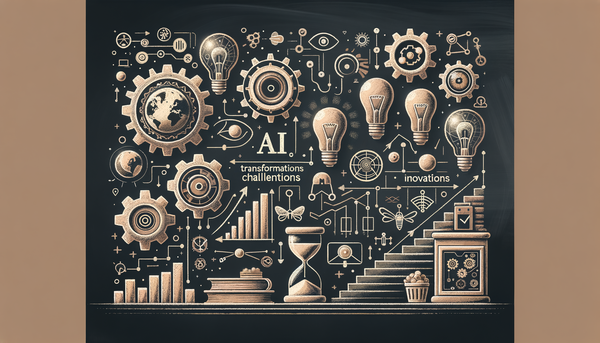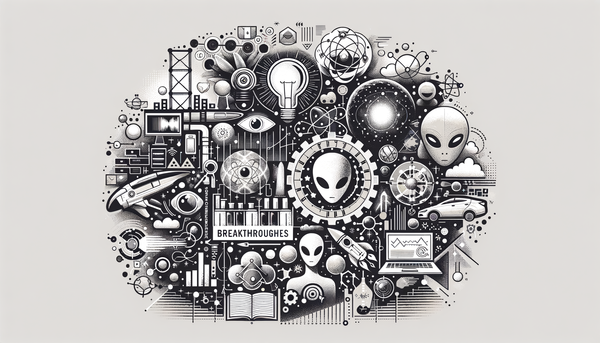AI Innovations: From Genetics to Cybersecurity and Beyond

In this comprehensive exploration, we delve into the diverse and transformative impacts of artificial intelligence across multiple spheres—from unraveling hidden genetic clues in the origins of COVID-19, to revolutionizing cybersecurity with cutting-edge platforms, to urging a unified approach in data governance, and even reshaping creative workflows through advanced media tools. This article offers in-depth analysis, expert opinions, and real-world examples that highlight how AI is not only bridging gaps between disparate domains but also challenging long-held assumptions about innovation, security, and artistic expression.
Uncovering Hidden Genetic Clues: AI’s Role in Decoding COVID-19’s Origins
Amid the ongoing global discourse on the intricacies of the COVID-19 pandemic, a groundbreaking study has emerged where artificial intelligence is unveiling previously concealed genetic clues in the SARS-CoV-2 genome. Researchers using advanced machine learning techniques have been able to scrutinize vast amounts of genetic data far beyond the capacities of traditional analytical methods. The AI-driven approach has identified subtle, yet critical, patterns that reflect the virus’s evolutionary history, inviting us to re-evaluate our understanding of zoonotic transmission and the origins of the pandemic.
Traditional epidemiological methods tend to rely on visible data and straightforward genetic sequencing. However, AI methods have enabled the detection of minuscule variations and intergenomic correlations, suggesting that the virus's journey might have involved more complex transmission routes than initially assumed. For instance, the identification of discrete genetic markers may point towards a hitherto underappreciated reservoir species or even multiple transmission nodes. This advanced level of analysis not only reshapes our perceptions regarding the virus's origins but equally paves the way for future projections. In scenarios where potential outbreaks loom large, faster genomic assessments can be crucial in designing better-targeted vaccines and therapeutic interventions.
It’s crucial to note that this breakthrough is not merely a triumph of computational power. It symbolizes the intersection of biology and technology, where AI becomes an indispensable tool in healthcare research. As NVIDIA’s Cybersecurity AI is already changing how we approach digital threats, this genomic AI research underscores how machine learning can similarly revolutionize our responses to biological crises. In fact, learning from historic plagues and modern outbreaks alike, one might recall the proverb:
“Those who cannot remember the past are condemned to repeat it.”
With AI as our guide, our grasp on the past improves, ensuring that future responses are both agile and informed.
The research community is optimistic that continued integration of AI in genomic studies can act as an early warning system, alerting public health officials about potential viral mutations or shifts in transmission dynamics at a pace that matches nature’s relentless march forward. In this sense, artificial intelligence is not just a passive observer but an active participant in strengthening global health security. For further discussion on how AI is making significant strides in various sectors, you may find insights in recent advances in AI across industries updates featured on AI.Biz.
Fortifying Cybersecurity: Nvidia’s AI Solutions Leading the Charge
In our increasingly interconnected digital world where cyber threats evolve by the day, the stakes of protecting critical infrastructure have never been higher. As industries pivot to more digital-centric operations, the demand for robust cybersecurity systems is reaching unprecedented levels. Enter NVIDIA’s Cybersecurity AI, a cutting-edge platform that is rapidly becoming the go-to solution for organizations eager to preemptively identify and neutralize threats before they escalate.
Leading tech giants such as CrowdStrike, World Wide Technology (WWT), and several other industry leaders have recently adopted this advanced platform to enhance their operational technology systems. By leveraging deep learning algorithms and real-time data processing, NVIDIA's solution offers rapid threat detection and an agile response mechanism. This platform distinguishes itself by learning from each network anomaly, thus progressively optimizing its ability to preemptively counter cyber attacks. As cyber adversaries grow ever more sophisticated, these proactive measures are not only beneficial—they are essential.
The real strength behind such AI-powered cybersecurity solutions lies in their capability to transform copious datasets into actionable intelligence. For example, in one scenario, an AI-operated system identified minute inconsistencies in network traffic that could have signaled the early stages of a data breach. This early detection not only prevented a potential security catastrophe but also provided invaluable data to further refine the AI’s predictive models.
Reflecting on this integration of AI with cybersecurity, I often recall Richard Branson's words:
"AI has the potential to radically transform business models. It’s not just about automation; it’s about driving innovation in ways we’ve never seen before." – Founder of Virgin Group, 2018
These insights emphasize that while AI is revolutionizing creative and analytical domains, its role in ensuring the security of critical infrastructure is equally transformative. Moreover, such AI-driven initiatives align with strategic moves by sectors detailed on our AI.Biz platforms, like in the article discussing transformations in security and healthcare.
The cybersecurity landscape is in constant flux, with new vulnerabilities emerging as technology further integrates into every facet of society. The collaborative efforts between tech giants and cybersecurity experts serve as a beacon of innovation amidst a turbulent digital era. By incorporating AI-driven threat intelligence, organizations are no longer simply reactive; they are evolving into dynamic systems that learn, adapt, and safeguard themselves against future risks. As cybersecurity continues to mature, it is heartening to see comprehensive strategies in place that blend data analytics, advanced machine learning, and an unyielding commitment to protecting foundational infrastructure.
The Imperative of Unified Data: Oracle’s Vision for a Collaborative Future
As artificial intelligence matures as a discipline, few challenges are as palpable as the fragmentation of data sources. Larry Ellison of Oracle has been particularly vocal about the urgent need for governments and private sectors to unify disparate data streams; a move that he asserts is essential for unlocking AI's full potential. Ellison's argument centers around the belief that the hidden power of artificial intelligence lies in its ability to harness a massive, interconnected network of data—turning isolated silos into a cohesive powerhouse that fuels smarter, actionable insights.
There is an inherent truth in the notion that integration leads to innovation. When data is isolated, the opportunity to draw comprehensive conclusions diminishes. Conversely, a collaborative data sharing approach can stimulate breakthroughs in sectors such as healthcare, security, and sustainable development. By pooling resources and establishing a common framework to share information between governments, organizations, and research institutions, the global community can significantly enhance the quality of insights generated by AI.
Consider the analogy of a vast library in which every book is scattered across different locations. The knowledge contained within remains inaccessible unless one is able to consolidate these volumes into a singular, well-organized repository. This unified repository can then be tapped for insights, sparking innovations that might have been unimaginable in isolated collections. It is this sort of profound integration that Ellison advocates for—a system where diverse data points converge to drive smarter, more effective AI solutions.
Several research papers echo these sentiments, with studies suggesting that a federated approach to data not only secures information but also accelerates the pace of AI development. The synchronization of global data efforts has already shown promising results in early warning systems for epidemic outbreaks, climate forecasting, and even smart city innovations. Ellison’s call for unity is a rallying cry towards building a more resilient and adaptive technological ecosystem. For further insights on data-driven breakthroughs, readers should check out other transformative narratives on our AI.Biz site in articles like AI's Role in Innovation and Society.
In our digital age, where information is both an asset and a vulnerability, the unification of data is not merely a technological challenge—it is a sociopolitical imperative. While the journey to achieve this integration is fraught with governance and privacy concerns, the potential benefits far outweigh the risks. The dialogue around data unification continues to evolve, with experts urging stakeholders to balance security with accessibility. This evolving narrative underscores the significance of fostering open data ecosystems as we chart the future course of artificial intelligence.
AI in Creativity: The Promise and Pitfalls of Adobe’s Video Generator
The creative industries have not been immune to AI’s transformative touch. Adobe’s recent launch of an AI-powered video generator promised to streamline the video production process, yet it has encountered a fair degree of skepticism. Despite the technological marvel behind its operation, many users express reservations over its ability to justify a subscription fee of $30 per month. Reports indicate that while the tool showcases the future potential of AI in media production, it still struggles with consistency, precision, and overall performance.
The development of AI tools for creative applications is a delicate balance between innovation and usability. Platforms like Adobe’s video generator are expected to democratize video production, allowing creators with limited resources to harness the power of automation. However, as with many nascent technologies, early iterations often face challenges. The tool’s limitations have sparked a dialogue within creative communities: can an AI product that falls short of expectations in its current form ultimately revolutionize the industry, or must it first prove its reliability and value on par with industry-standard solutions?
Critics suggest that the tool lacks the fine-tuned capabilities necessary for professional-grade editing. Yet, it is essential to view these initial shortcomings as steps in a longer evolutionary process. Technologies like these are refined incrementally, often learning from user feedback and adapting over time. In many ways, Adobe’s venture into AI-driven video production reminds one of early digital photography—the initial iterations were met with resistance, until innovation and improved techniques eventually resulted in the revolutionary tools we rely on today.
Creativity and innovation often go hand-in-hand with trial and error. As one user put it, sometimes an experimental tool is less about immediate perfection and more about charting a new path. A quote by Sebastian Thrun resonates here:
"Nobody phrases it this way, but I think that artificial intelligence is almost a humanities discipline. It's really an attempt to understand human intelligence and human cognition." – What We Are Becoming
Though originally in a different context, the philosophy applies well to creative AI. It highlights that the journey toward truly transformative technology is never linear, but rather a dynamic interplay of challenges, iterations, and eventual breakthroughs.
The market will undoubtedly continue to test such AI offerings, distinguishing those that can adapt and evolve from those that falter under user expectations. Until the technology matures further, potential subscribers might do well to evaluate their needs carefully. In the meantime, developments in related domains, such as our detailed analysis of AI’s impact on digital transformation in the security and healthcare sectors, continue emphasizing that early-stage innovations, while imperfect, pave the way for future breakthroughs.
Interconnected Fields: AI’s Broader Impact on Innovation and Industry
Artificial intelligence, by its very nature, is an interdisciplinary force, bridging the realms of science, technology, and even philosophy. Each of the developments discussed above—whether unlocking genetic codes in viral genomes, securing critical digital infrastructures, unifying global datasets, or even pushing creative boundaries—represents a mosaic of collaborative human ingenuity and machine efficiency.
The common thread is clear: AI's capacity to derive insights from complex datasets, automate intricate processes, and enable proactive responses is fundamentally changing the way we approach problems. Rather than approaching challenges as isolated issues, we now see an ecosystem where advances in one field can have spillover effects in another. For instance, the same deep learning algorithms that detect cyber threats are also being fine-tuned to analyze genomic sequences. This kind of synergy not only accelerates progress but also leads to more comprehensive, systemic solutions.
To illustrate this point, consider the analogy of a symphony orchestra. Each section—be it strings, brass, or percussion—contributes to the overall performance. While every instrument has its unique role, the beauty of the symphony emerges only when all components are harmonized. In the world of AI, various technological breakthroughs, even those from seemingly disparate sectors, come together to produce an intricate melody of innovation. As I often reflect, the true power of AI can only be fully realized when it is embraced as an integrative force that crosses traditional disciplinary boundaries.
Historically, every major technological shift has been marked by an era of experimentation and interdisciplinary collaboration. The Renaissance, for example, was not merely a period of artistic achievements but also a time when scientific inquiry and philosophical thought spurred innovations in numerous fields. Today, our technological renaissance is being driven by artificial intelligence, and while the transition comes with its own challenges, it is also filled with unprecedented opportunities. The insights from various studies—ranging from genomic research to cybersecurity—remind us that the pursuit of knowledge need not be compartmentalized.
Moreover, as AI continues to advance, we find ourselves at a juncture where creativity meets precision. In business, this fusion leads to more agile decision-making and operational efficiency, as evidenced by leaders like Oracle who advocate for data unification. In cybersecurity, it manifests as proactive defenses that learn from every attempted breach. In genomic research, it accelerates the discovery of solutions that benefit public health. These diverse applications of AI are a testament to its versatility and the transformative potential it holds for society at large.
It is worth noting that the conversation about AI’s evolution is ongoing, with debates often centered around ethical implications and the societal impact of such transformative technology. By integrating AI ethically and responsibly, we not only optimize its capabilities but also ensure that its benefits are equitably distributed. This holistic approach is crucial for maintaining public trust as we step into an era defined by intelligent systems and interconnected data ecosystems.
Navigating the Future: Deep Insights and Where We Stand
Standing at the crossroads of rapid technological change, it is evident that artificial intelligence is set to redefine our future. Whether it is through uncovering hidden genetic markers that challenge our preconceptions about pandemics, deploying sophisticated AI platforms to shield our infrastructures, rallying for a unified data approach to accelerate AI advancements, or even transforming creative industries, the message is unambiguous: AI is a dynamic force with the capacity to revolutionize every facet of society.
As I reflect on these developments, it is clear that the journey toward fully integrated AI is as much about human innovation as it is about machine intelligence. The integration of AI in various sectors represents a harmonious convergence of technological expertise and practical necessity. In times of crisis, such as during the COVID-19 pandemic, AI has demonstrated its ability to provide deep insights that reshape our understanding of complex biological phenomena. Similarly, in cybersecurity, AI’s rapid response capabilities offer much-needed protection in a digital era fraught with vulnerabilities.
Yet, we must also recognize the inherent challenges that accompany such sweeping transformations. The skepticism surrounding products like Adobe’s video generator underscores the reality that innovation is often accompanied by hurdles. Early-stage technologies are rarely perfect; they demand iterations, user feedback, and an unwavering commitment to continuous improvement. Such challenges, though daunting at times, only serve to underscore the intricate dance between risk and reward in the pursuit of progress.
In the grand narrative of technological evolution, every advancement in AI is a step towards a more informed, interconnected, and intelligent future. The call for unified data by Oracle, for instance, is not merely a technical suggestion—it is a vision for a world where collaborative intelligence drives societal progress. By breaking down traditional silos of information, we empower systems that learn from each other, adapt, and ultimately function more efficiently. The ripple effects of such changes are bound to be felt not only in high-tech industries but across every stratum of society.
The diverse applications of AI we have discussed today exemplify how deep data analysis, rapid threat detection, and creative innovation are no longer isolated phenomena, but parts of a larger, interconnected framework. It reminds me of an old adage: “Innovation is the ability to see change as an opportunity – not a threat.” As we embrace this opportunity, our collective challenge is to ensure that the development and deployment of AI remain guided by ethical principles and a commitment to the greater good.
Looking ahead, the research community, technology innovators, and policymakers will undoubtedly need to work in tandem. It is through collaborative efforts—whether in unifying data or developing AI that learns from every interaction—that the promise of AI can be truly realized. For those interested in exploring more discussions on how AI serves as a catalyst for innovation across sectors, our recent piece on AI's Role in Innovation and Society provides further valuable insights.
As we navigate the complex landscape ahead, one thing remains indisputable: artificial intelligence is not simply a tool of the future, but a powerful enabler of transformation today, ready to shape the contours of our world.
Further Readings and Cross-References
For readers eager to dive deeper into these subject areas, the following articles provide additional perspectives and investigative insights:
- Major Advances in AI Across Industries – Explore how AI is reshaping various sectors with groundbreaking innovations.
- AI's Impact on Data Privacy, Agriculture, and Infrastructure – Understand the broader implications of AI in enhancing privacy and promoting sustainable practices.
- AI's Impact on Shopping, Security, and Healthcare – Discover the transformative effects of AI across multiple consumer and service industries.
- AI's Role in Innovation and Society – Read about the interplay between artificial intelligence, societal change, and creative innovation.
By exploring these resources, readers can gain a more comprehensive understanding of how diverse AI advancements are interwoven to create a tapestry of innovation that spans science, technology, and the human experience.




